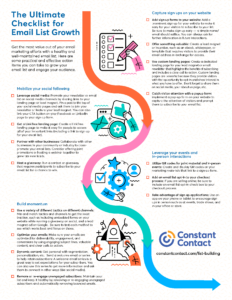A client last week told me they didn’t want to do their July eNews because “It’s summer. It’s hot. People are busy. Sales are slow.”… … … I couldn’t convince them to change their decision but I hope I can convince you not to follow their example. Stopping your advertising in slow times whether it’s a Depression, Recession, or July in Arizona is the wrong decision. Of course, have a budget. Watch your costs. Look for good value. But don’t stop advertising your business.
Read this marketing story from the Depression era and think
about the impact it is still having today in 2017!
2017!
 “Not all email personalization is created equal.
“Not all email personalization is created equal.  “Yes, email personalization like this is simple and easy to do if you have the right ESP. It’s become a popular tactic because we know email marketing personalization is good for business. 71% of consumers expect companies to deliver personalized experiences, according to McKinsey.”
“Yes, email personalization like this is simple and easy to do if you have the right ESP. It’s become a popular tactic because we know email marketing personalization is good for business. 71% of consumers expect companies to deliver personalized experiences, according to McKinsey.” As email geeks, we love to obsess over exciting email designs and funky new coding tricks. But the real reason we send emails? To build relationships that drive business results.
As email geeks, we love to obsess over exciting email designs and funky new coding tricks. But the real reason we send emails? To build relationships that drive business results.
 We often get the question of how long an online text should be. As this often depends on different factors, it’s difficult to give just one answer. But looking from an SEO and user-oriented perspective, there is a rule of thumb you can follow. We advise writing more than 300 words for posts or pages, while product descriptions should be over 200 words. Why? Because a higher word count helps Google understand what your text is about. It also gives you the room to give enough information on the topic being discussed, which is helpful for your site visitors. However, we don’t advise adding more content for the sake of it. Quality and readability always come first!
We often get the question of how long an online text should be. As this often depends on different factors, it’s difficult to give just one answer. But looking from an SEO and user-oriented perspective, there is a rule of thumb you can follow. We advise writing more than 300 words for posts or pages, while product descriptions should be over 200 words. Why? Because a higher word count helps Google understand what your text is about. It also gives you the room to give enough information on the topic being discussed, which is helpful for your site visitors. However, we don’t advise adding more content for the sake of it. Quality and readability always come first! This headline recently appeared in Tech Crunch.
This headline recently appeared in Tech Crunch.  The goal of any search engine is to give the searcher the “best” answer quickly and accurately. In a perfect world, the first listing on the search results would be exactly what you are looking for. Repeat searches build income for the search engine.
The goal of any search engine is to give the searcher the “best” answer quickly and accurately. In a perfect world, the first listing on the search results would be exactly what you are looking for. Repeat searches build income for the search engine. What would your email marketing team do with $650,000?
What would your email marketing team do with $650,000? In the fast-paced digital marketing domain, search engine optimization (SEO) and social media represent two fundamental elements that shape a brand’s online identity. Each plays a pivotal role, yet when they converge into an effective seo strategy, the combined effect amplifies the brand’s visibility and influence. This harmonious alignment between SEO and social media paves the way for a more pronounced and compelling online brand identity.
In the fast-paced digital marketing domain, search engine optimization (SEO) and social media represent two fundamental elements that shape a brand’s online identity. Each plays a pivotal role, yet when they converge into an effective seo strategy, the combined effect amplifies the brand’s visibility and influence. This harmonious alignment between SEO and social media paves the way for a more pronounced and compelling online brand identity.